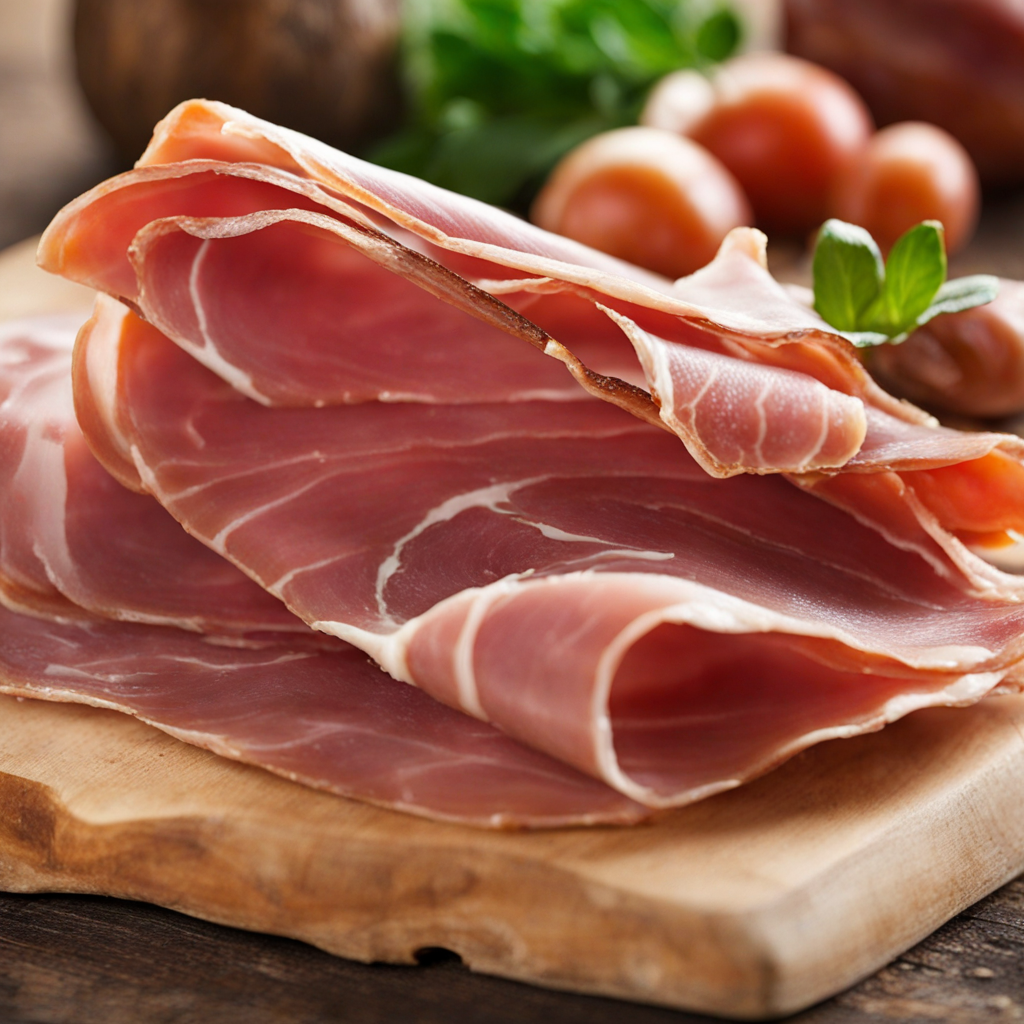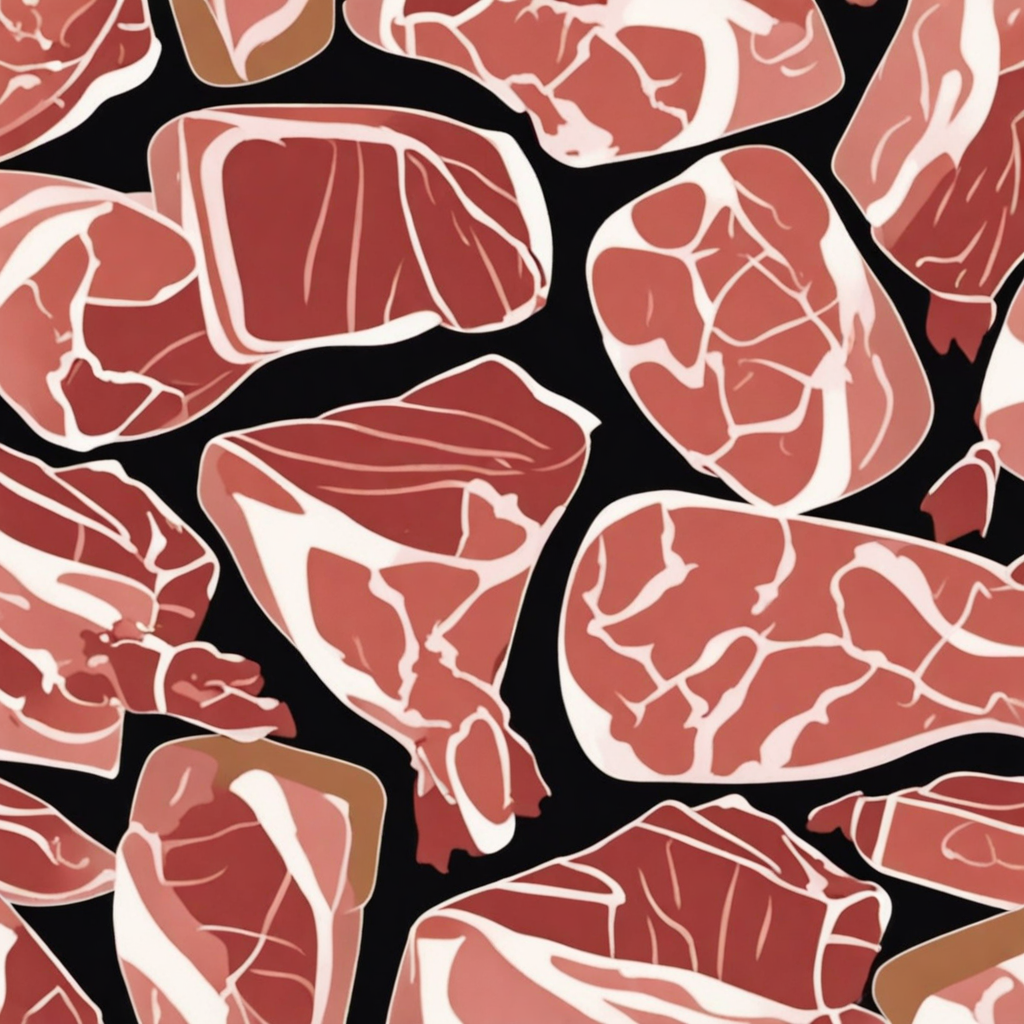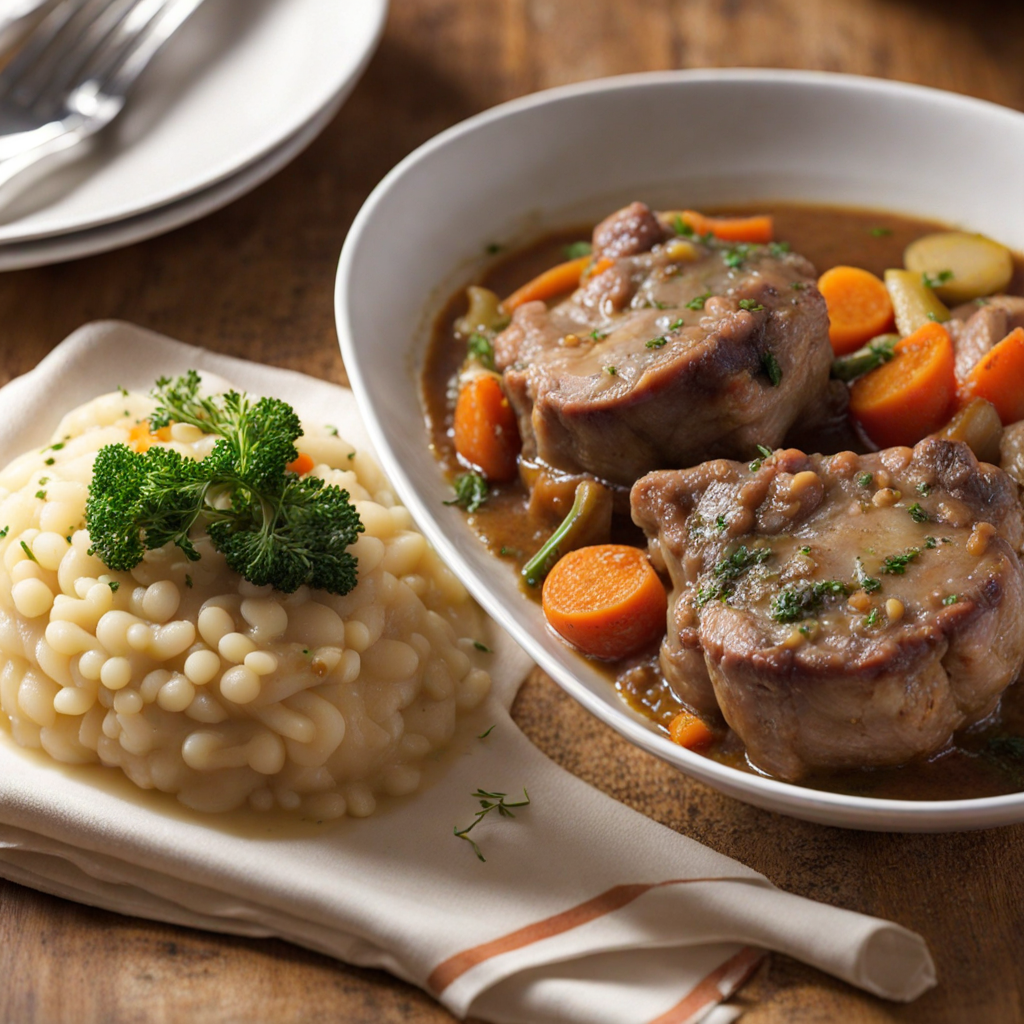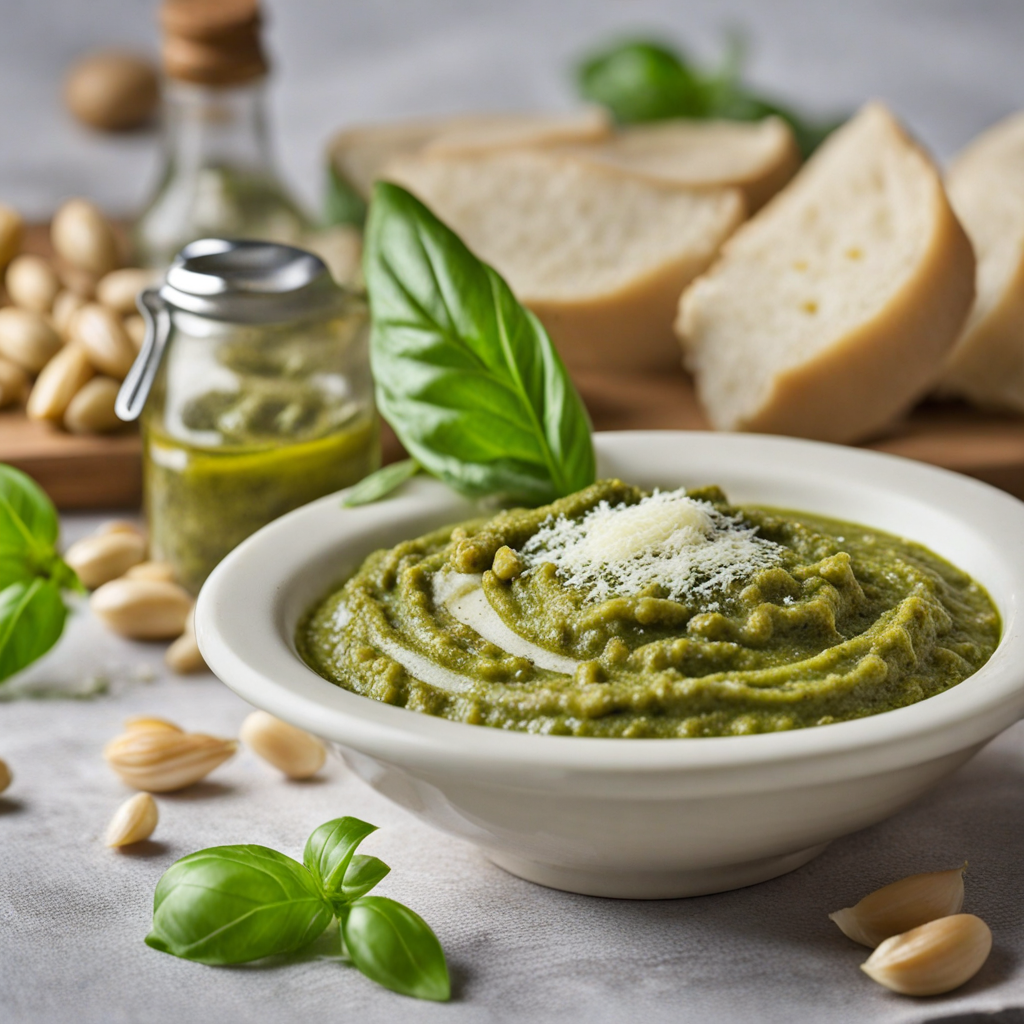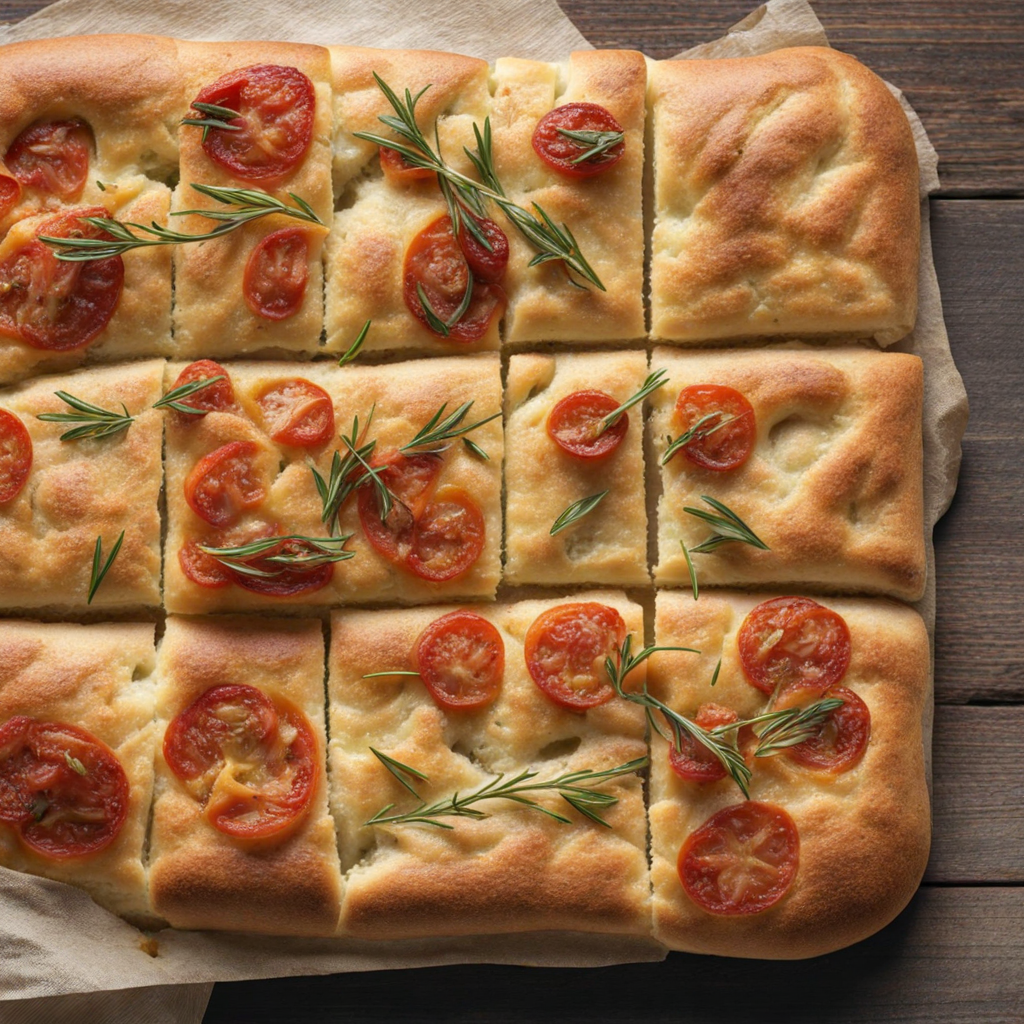Prosciutto
Prosciutto is a celebrated Italian dry-cured ham that embodies the rich culinary traditions of Italy. Its origins can be traced back to ancient times, where artisans would rely on the natural elements of air and salt to preserve the meat. Characterized by its delicate, melt-in-your-mouth texture, prosciutto is typically made from the hind leg of the pig, which is carefully salted and aged for several months to develop its complex flavors. The process allows the natural sweetness of the pork to shine through, producing a savory and slightly sweet taste that is both luxurious and satisfying. The flavor profile of prosciutto is truly unique, with a balance of saltiness and a hint of nuttiness brought out by the aging process. When thinly sliced, it reveals a beautiful marbled pattern of fat, which adds to its richness. Each bite offers a delightful experience, as the layers of flavor unfold on the palate. Prosciutto is often enjoyed on its own, wrapped around fresh fruits like melons or figs, or paired with artisanal cheeses, crusty bread, and a drizzle of balsamic glaze. This versatility makes it a perfect addition to charcuterie boards or as an elegant appetizer for gatherings. In addition to its delicious taste, prosciutto embodies the essence of Italian cuisine, where simplicity and quality ingredients take center stage. It's commonly used in a variety of dishes, from pasta and risottos to pizzas and salads, elevating each dish with its distinct flavor. Whether you're a seasoned foodie or exploring new tastes, discovering prosciutto opens the door to a world of authentic Italian flavors that are both comforting and indulgent.
How It Became This Dish
Origin of Prosciutto The history of prosciutto, a dry-cured ham that hails from Italy, dates back to ancient times. Its roots can be traced to the Roman Empire, where curing meats was a method of preservation in a time without refrigeration. The word "prosciutto" itself is derived from the Latin term "perexsuctum," which means "dried thoroughly." This technique allowed for the safe storage of pork, enabling it to be consumed long after the animal was slaughtered. Different regions of Italy developed their own unique styles of prosciutto, each influenced by local climate, traditions, and available resources. The most famous varieties include Prosciutto di Parma and Prosciutto di San Daniele, both of which have gained protected designation of origin (PDO) status from the European Union. This certification ensures that these hams are produced in specific regions and adhere to strict guidelines. \n Traditional Production Process The production of prosciutto is a meticulous process that begins with selecting high-quality pigs, typically large white breeds like the Large White or Landrace. The pigs are often raised in specific areas, such as the hills of Emilia-Romagna for Prosciutto di Parma, where they are fed a diet rich in grains and whey. Once the pigs reach maturity, they are slaughtered, and the legs are carefully prepared for curing. The curing process involves salting the meat, which draws out moisture and prevents spoilage. The ham is then left to rest for a period that can last from several months to over two years, during which time it undergoes natural fermentation and flavor development. The hams are hung in well-ventilated cellars, where the cool, dry air contributes to the unique taste and texture of the final product. Each step in the process is important, as it influences the ham's flavor profile and aroma. \n Cultural Significance Prosciutto is not just a food item; it is a symbol of Italian culture and tradition. It represents the artisanal craftsmanship that is deeply rooted in Italy's culinary heritage. In many Italian families, the preparation of prosciutto is a vital tradition, often passed down through generations. It embodies the philosophy of "slow food," where the emphasis is placed on quality ingredients and traditional methods over mass production. In Italian cuisine, prosciutto is often enjoyed in its purest form, thinly sliced and served as an antipasto. It is frequently paired with sweet fruits like melon or figs, creating a delightful contrast of flavors. Additionally, prosciutto is used in various dishes, from pasta and risottos to pizza and sandwiches, showcasing its versatility and integration into daily life. \n Regional Variations As prosciutto spread throughout Italy, various regions began to develop their own styles and variations. Beyond the well-known Prosciutto di Parma and Prosciutto di San Daniele, other notable types include Prosciutto Toscano, which is characterized by a more intense flavor due to the use of local spices, and Prosciutto di Modena, known for its sweet and delicate taste. Each region's unique climate and production methods contribute to the distinct characteristics of their prosciutto. For instance, the coastal areas of Liguria produce a ham that is often infused with herbs, while the mountainous regions of Trentino-Alto Adige favor a more straightforward approach, focusing solely on the quality of the pork and salt. \n Prosciutto in Modern Times In recent years, prosciutto has gained international acclaim, transcending its traditional Italian roots to become a staple in gourmet cuisine worldwide. Chefs and home cooks alike appreciate its rich flavor and versatility, incorporating it into a wide array of dishes. The rise of food tourism has also played a role in elevating prosciutto's status, as visitors flock to Italy to experience authentic prosciutto production firsthand. The globalization of culinary traditions has led to new interpretations of prosciutto, inspiring fusion dishes that blend Italian flavors with global cuisines. The popularity of charcuterie boards has also contributed to prosciutto's resurgence, as it pairs well with various cheeses, olives, and artisan breads, making it a perfect addition to social gatherings and celebrations. \n Health Considerations While prosciutto is celebrated for its flavor, it is important to consider its nutritional content. Being a cured meat, prosciutto is relatively high in sodium and fat, which necessitates moderation in consumption. However, it does offer some health benefits, as it is a source of protein and contains essential vitamins and minerals, such as B vitamins and iron. In recent years, there has been a growing trend toward organic and sustainably produced prosciutto, reflecting a broader consumer demand for ethically sourced food products. Producers are increasingly focusing on animal welfare and environmental sustainability, leading to an evolving market that caters to health-conscious consumers while maintaining traditional methods. \n Conclusion: A Timeless Tradition The journey of prosciutto from ancient Rome to modern tables encapsulates the essence of Italian culinary tradition. Its rich history, regional diversity, and cultural significance make it more than just a food item; it is a representation of Italy's heritage and a testament to the craftsmanship of its producers. As prosciutto continues to adapt to contemporary tastes and trends, it remains a cherished delicacy that connects people to the traditions of the past while delighting the palates of the present.
You may like
Discover local flavors from Italy


